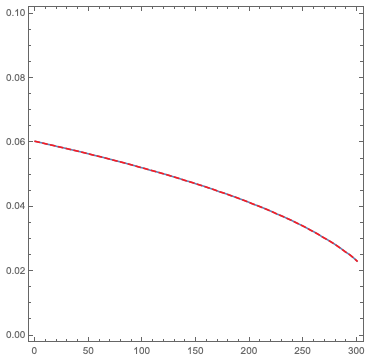chi(t) is implicit function. The implicit function can be plotted by ContourPlot.
Is it possible to obtain chi(t) explicitly using function interpolation?
chi=Interpolation[...], t∈(0, 300)
ClearAll["Global`*"]
eq[chi_, t_] :=
0.7*(t - 315)*(chi)^(1/1.6) +
0.008*(chi)^(1/1.6 + 1/0.4)*1000^(1/0.4) - 1;
ContourPlot[eq[chi, t] == 0, {t, 0, 300}, {chi, 0, 100*10^(-3)}]


